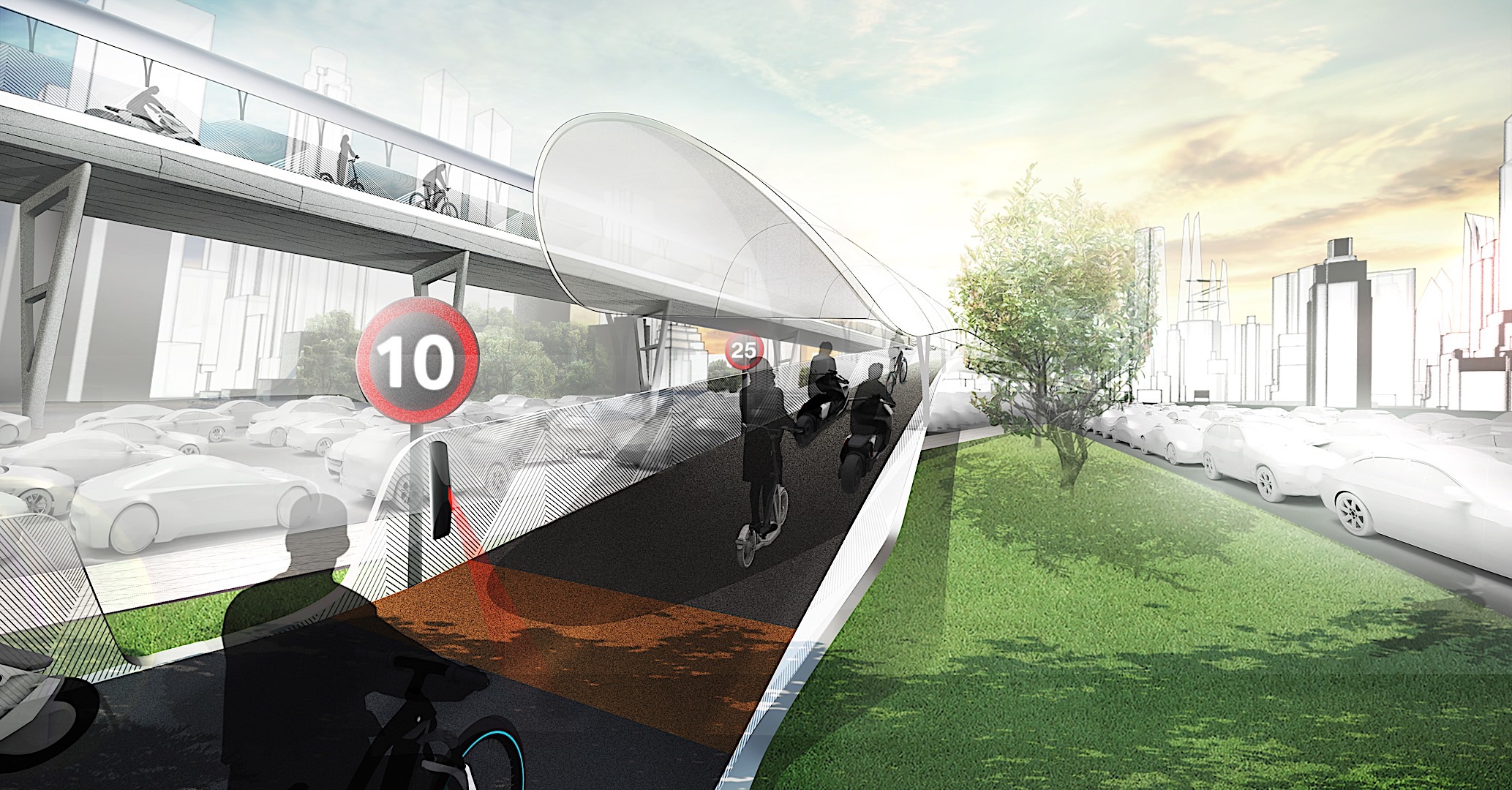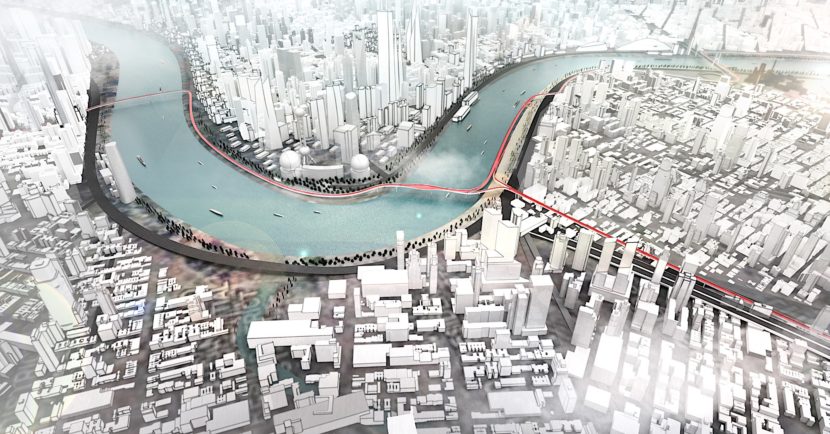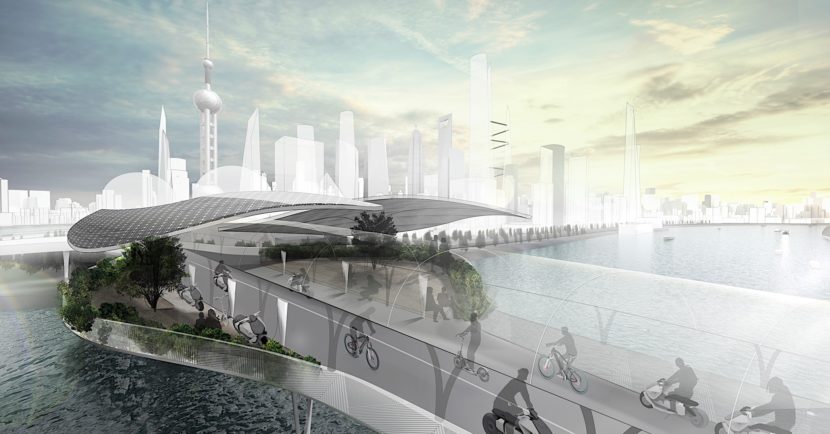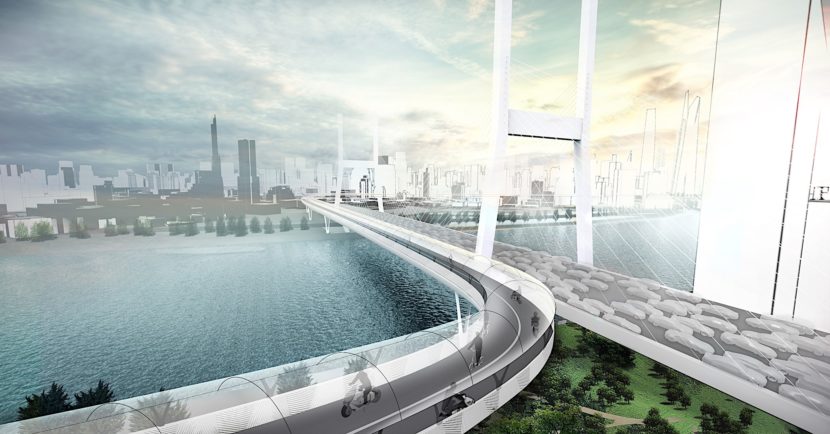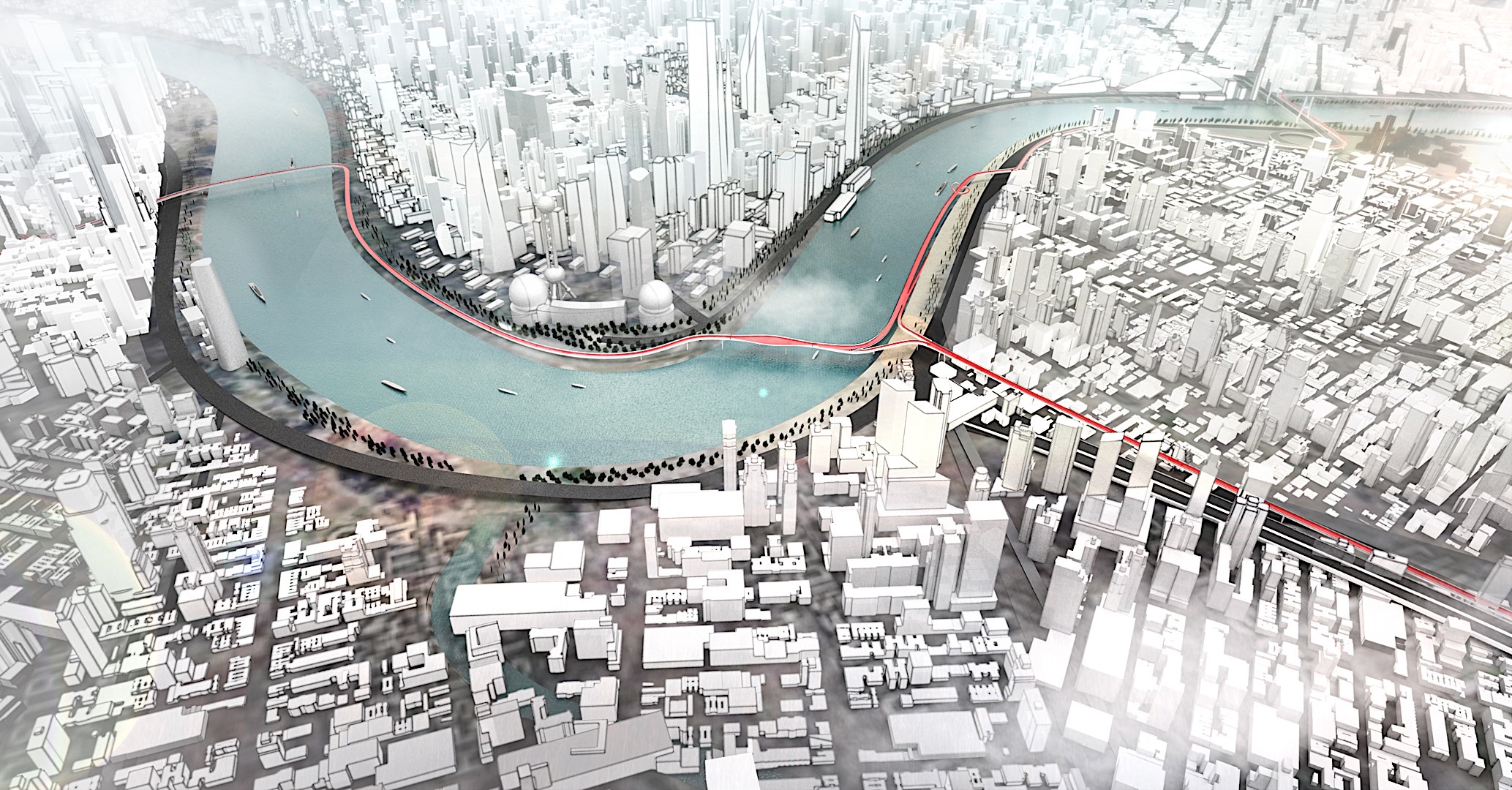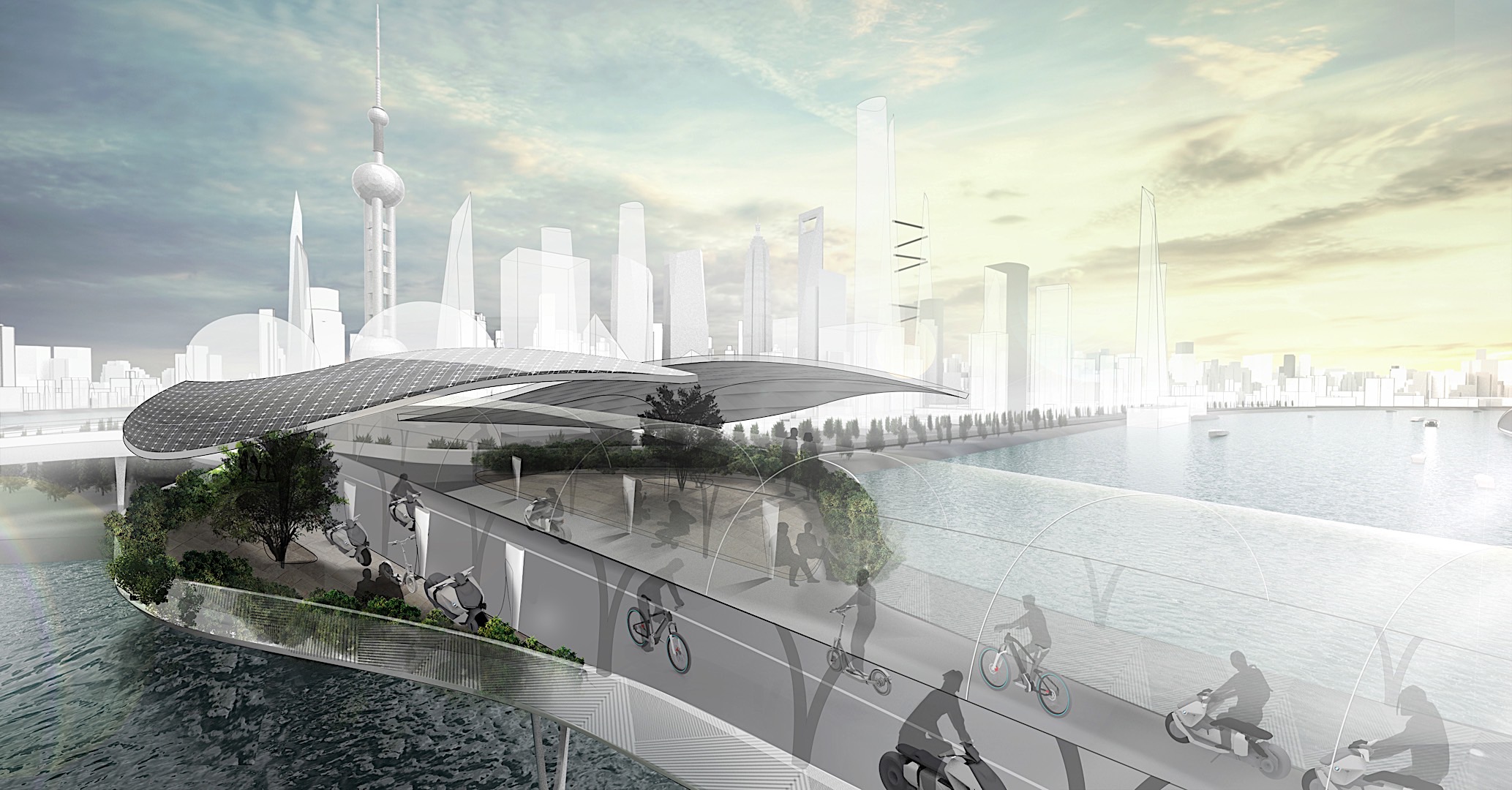Day by day it’s becoming abundantly clear that big city centers are growing more and more crowded. Solutions for congested city centers have been applied around the world but the process doesn’t seem to be slowing down. Since a growing number of people are moving to the proverbial city, this is bound to cause even more headaches in the future for administrators of city grids. That’s where BMW’s Vision E³ Way concept steps in, bringing a bold proposition to the table.
The BMW Vision E³ Way is a project which shows a visionary mobility concept that is designed not just to specifically address the challenges faced by megacities – such as traffic congestion and air pollution – but to provide a solution that is both simple and effective. It consists of an elevated road concept for electrically powered two-wheel vehicles which links key traffic hubs in urban conurbations.
The three E’s stand for “elevated”, “electric” and “efficient” – the concept’s defining properties. The use of roadways that are elevated above existing roads means the project generates additional traffic capacity. The elevated road is simple and modular in design, economical to build as a result, and provides a fast, direct link between key traffic hubs, making it the perfect alternative for commuters traveling up to 15 km (10 km). This makes use of the elevated road very efficient not only in terms of cost but also as regards travel time, according to BMW.
“The BMW Vision E³ Way opens up a whole new dimension of mobility in overcrowded conurbations – efficient, convenient and safe. It works by simply creating space for two-wheel zero-emissions traffic,” explains Dr. Markus Seidel, Director BMW Group Technology Office China. “In China, more than a billion people will be living in cities by 2050. The country will become the global incubator for numerous mobility innovations such as the BMW Vision E3 Way,” Seidel adds, “after all, nowhere else is there such an urgent need for action.”
Ramps and sluice systems are used to connect the BMW Vision E³ Way to the regular road network, underground stations, other traffic hubs, and even shopping malls. By shifting single-track mobility to its own spatial level, the BMW Vision E³ Way makes daily commuting not just faster but safer, too. The fact that is used solely by electrically powered two-wheel vehicles means that collisions with cars are ruled out. The general risk of accidents is further reduced by means of an automatic speed limit of 25 km/h.
The concept is meant to be used by all people. Therefore, for those who do not own an electric, two-wheel vehicle, a sharing scheme can be put in motion, to serve their needs. Furthermore, the suspended roads are covered so that they can protect the travelers from rain or head. According to BMW, a cooling system with purified rainwater creates pleasant temperatures, a feature which can also be used to clean the road surface at night.
Initial feasibility studies demonstrate that a concept such as the BMW Vision E³ Way can significantly reduce congestion, emissions, travel time and the risk of accidents. Traffic flow is permanently optimized by means of automated video surveillance systems and artificial intelligence as well as through the integration of smart city ecosystems. And the best thing is that its modular design and free scalability make the concept essentially suitable for use in any megacity.
The BMW Vision E³ Way forms part of the BMW Group strategy NUMBER ONE > NEXT. It has been developed by the BMW Group’s “Research, New Technologies, Innovations” division which has offices in Mountain View (CA), Shanghai, Tokyo and Seoul.


